Wagon wheels … on a roll in gardens – by Diane Morey Sitton
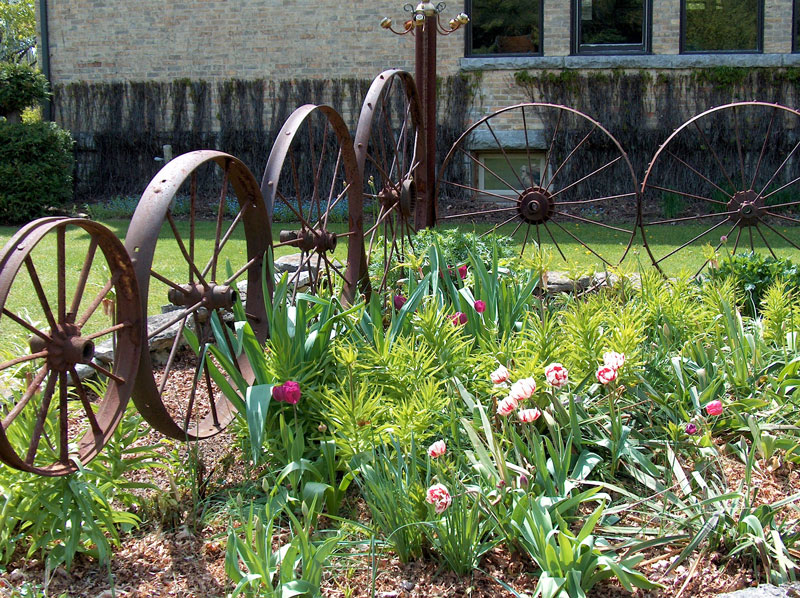
It’s hard to say what makes wagon wheels so garden-friendly.
For starters, they are remarkably versatile. You see them lined up as fences, welded into gates, and used as legs on patio benches. Round like flowers with spokes that radiate like sunbeams, wagon wheels seem configured to catch the eye. What’s more, their age-old patina – created by decades of mud and miles – is especially compatible with Mother Nature.

Generally, historians believe that small, cattle-drawn wagons and carts existed as early as 3,500 BC. These primitive vehicles had wooden wheels, i.e. horizontal slabs cut from tree trunks. Slowly, as the centuries rolled by, wheels evolved. Wooden wheels acquired spokes; then came iron rims. Modern times brought rubber and mass-produced tires.
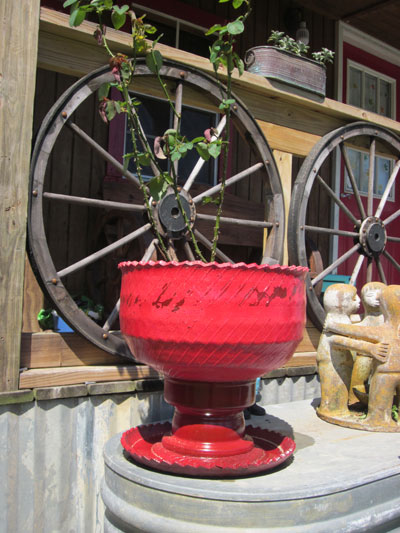
Although America can’t claim bragging rights for inventing the wheel itself, American ingenuity had a lot to do with developing the classic wagon wheel – a transportation game-changer with spokes, hub and iron rim in use until the early 1900s.
These days that same American resourcefulness accounts for the various ways these old relics are put to use in landscapes.

For some gardeners, the creativity and fun begin when they place a wagon wheel on either side of their sidewalk to create curbside décor. Other gardeners incorporate wagon wheels into gates, or they use a large wagon wheel as the gate itself. Deeper into the garden, wagon wheels placed flat on the ground become segmented gardens for herbs or succulents. When welded together side-by-side, metal wagon wheels serve as fences, borders or screens. The same wheels, welded together and displayed upright, form trellises, perfect for showcasing flowering vines.
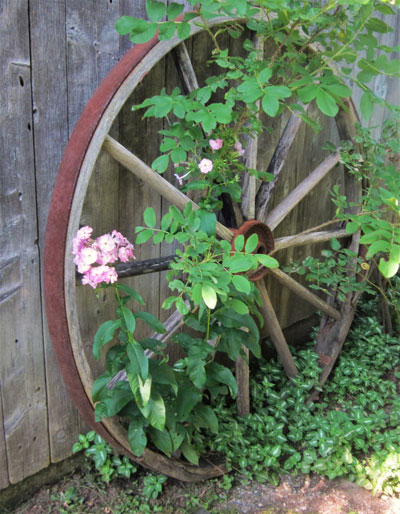
But that’s not all. When mounted in a wooden privacy fence, wagon wheels become “windows,” letting in light and breeze. Wagon wheels can serve as the legs of a table or the ends of a bench. They can be transformed into porch railings or handrails for porch stairs. They become garden art when painted folk art style. They become focal points when displayed with vintage implements.
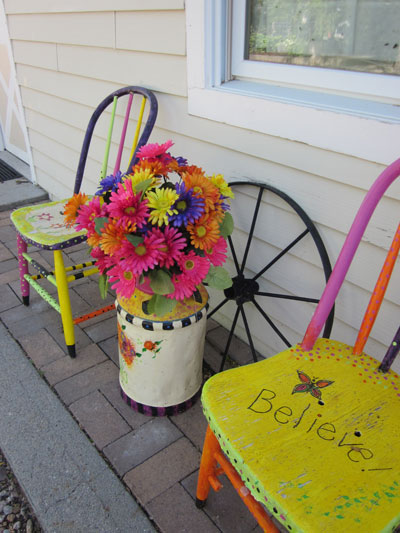
Aside from their usefulness and versatility, however, you can’t help asking yourself, “what is it exactly that makes these crusty old artifacts so … keepable?”
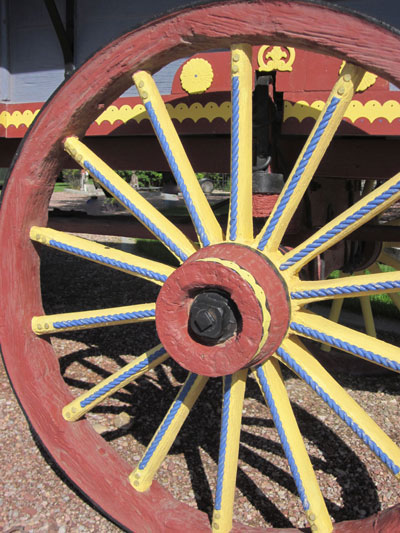
Maybe, just maybe, their allure and talent for rebranding themselves as “everything garden” lies with the roads they have travelled and the loads they have hauled.
Just think of the stories they could tell!
